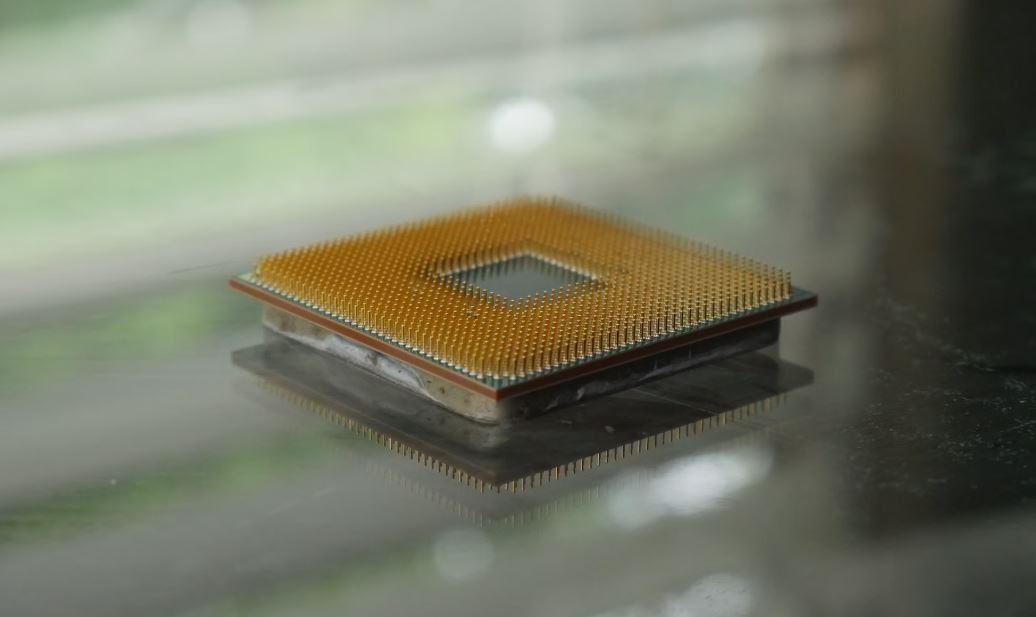Neural Network: A Breakthrough in Artificial Intelligence
Artificial Intelligence (AI) has made significant progress in recent years, and one of the most promising advancements is the development of neural networks. Neural networks are a type of machine learning model that mimics the structure and function of the human brain. This article will explore the concept of neural networks, their key components, and their applications in various fields.
Key Takeaways
- Neural networks are machine learning models inspired by the human brain.
- They consist of interconnected nodes called neurons, organized in layers.
- Neural networks can be used for various tasks, including image recognition, natural language processing, and financial predictions.
Understanding Neural Networks
**Neural networks** are computational models designed to recognize patterns and make predictions based on input data. They are composed of interconnected **neurons**, which are organized in layers. Each neuron receives input from the previous layer, performs a computation, and sends an output to the next layer. **Neural networks** learn through a training process, adjusting the connection weights between neurons to optimize their performance.
*Neural networks have revolutionized the field of machine learning, enabling computers to perform complex tasks previously only achievable by humans.*
Components of Neural Networks
Neural networks consist of several key components:
- Input Layer: The first layer of neurons that receives input data.
- Hidden Layers: Intermediate layers that extract and transform features from the input data.
- Output Layer: The final layer that produces the network’s output or prediction.
- Weights: Parameters that determine the strength of connections between neurons.
- Activation Function: Non-linear functions applied to the output of neurons, introducing non-linearity into the network.
*The activation function is crucial for enabling neural networks to model complex relationships between variables.*
Applications of Neural Networks
Neural networks have found applications in various fields, including:
- Image Recognition: Neural networks can classify images, identify objects, and even generate realistic images.
- Natural Language Processing: They can understand and generate human language, enabling chatbots and voice assistants.
- Financial Predictions: Neural networks can analyze financial data and make predictions on stocks, market trends, and risk assessments.
*Neural networks have the potential to revolutionize industries such as healthcare, finance, and transportation.*
Neural Network vs. Traditional Machine Learning Algorithms
Neural networks offer several advantages over traditional machine learning algorithms:
- Ability to Learn Complex Patterns: Neural networks can learn intricate patterns and relationships in the data.
- Non-Linearity: They can model non-linear relationships between variables, which is often crucial in real-world problems.
- Adaptability: Neural networks can adapt and adjust their internal representations, making them suitable for dynamic environments.
*This adaptability allows neural networks to handle tasks that other algorithms may struggle with.*
Table 1: Comparison of Traditional Machine Learning Algorithms and Neural Networks
| Aspect | Traditional Machine Learning Algorithms | Neural Networks |
|---|---|---|
| Learning Capacity | Limited to linear patterns | High, can learn complex patterns |
| Non-Linearity | Cannot easily model non-linear relationships | Can model non-linear relationships effectively |
| Adaptability | Less adaptable to dynamic environments | High adaptability and flexibility |
Table 2: Applications of Neural Networks
| Field | Examples |
|---|---|
| Image Recognition | Facial recognition, object detection |
| Natural Language Processing | Text classification, sentiment analysis |
| Financial Predictions | Stock market forecasting, credit risk evaluation |
Table 3: Advantages of Neural Networks
| Advantage | Description |
|---|---|
| Ability to Learn Complex Patterns | Neural networks can discover intricate patterns in data. |
| Non-Linearity | They can model non-linear relationships between variables. |
| Adaptability | Neural networks can adapt to dynamic environments. |
Wrapping Up
Neural networks have revolutionized the field of artificial intelligence, offering unprecedented capabilities to process and analyze complex data. With applications spanning various domains, from image recognition to financial predictions, neural networks are transforming industries and opening up new possibilities. The future of AI undoubtedly lies in the continued advancement and utilization of neural networks.

Common Misconceptions
Misconception 1: Neural Networks are Like the Human Brain
One common misconception about neural networks is that they function in the same way as the human brain. While neural networks are inspired by the biological neurons in our brains, they are not identical. They lack the complexity and adaptability of the human brain’s neural connections.
- Neural networks lack consciousness and self-awareness.
- Neural networks cannot replicate the learning and memory capabilities of the human brain.
- Neural networks do not possess emotions or subjective experiences.
Misconception 2: Neural Networks are Always Accurate
Another misconception is that neural networks always produce accurate results. Though neural networks have achieved impressive performance in various tasks, they are not infallible. Like any other machine learning algorithms, neural networks can make mistakes and generate incorrect predictions or classifications.
- Neural networks are susceptible to biases and errors in the training data.
- The accuracy of neural networks heavily depends on the quality and quantity of the training data.
- Improper hyperparameter tuning can lead to poor performance of neural networks.
Misconception 3: Neural Networks Can Replace Human Decision Making
It is a common misconception that neural networks can fully replace human decision-making processes. While they excel in pattern recognition and complex data processing tasks, neural networks lack the nuanced understanding and context that humans possess.
- Neural networks do not have critical thinking and common sense reasoning abilities.
- Human decision-making often takes into account ethical, moral, or social considerations, which neural networks cannot easily replicate.
- Neural networks cannot provide explanations or justification for their decisions, unlike humans.
Misconception 4: Training Neural Networks Requires Massive Computing Power
Many people assume that training neural networks necessitates vast amounts of computing power and expensive hardware. While it is true that large neural networks with significant amounts of data do require substantial computing resources, there are also techniques and frameworks available that allow training on more modest setups.
- Advanced optimization algorithms can help train neural networks efficiently.
- Cloud computing platforms and distributed computing can be utilized to alleviate the computational burden for training neural networks.
- Various frameworks and libraries optimize the performance of neural networks on different hardware.
Misconception 5: Neural Networks are Only for Experts in Machine Learning
Lastly, there is a misconception that neural networks can only be used and understood by experts in the field of machine learning. While expertise certainly helps in developing and deploying complex neural networks, there are also user-friendly tools and resources available that allow people without deep technical knowledge to work with neural networks.
- Graphical user interfaces (GUIs) simplify the process of creating and training neural networks.
- Online tutorials and educational resources are readily available to guide beginners in the usage of neural networks.
- Frameworks and libraries provide higher-level abstractions that make it easier to work with neural networks.

The Power of Neural Network: Revolutionizing the World
Neural networks have transformed numerous industries, from healthcare to finance. This article showcases 10 captivating examples illustrating the wide-reaching impact of neural networks in our modern society.
Enhancing Medical Diagnostics
Neural networks have revolutionized medical diagnostics by providing accurate and efficient analysis. This table demonstrates the success rates of a neural network-based system in correctly diagnosing various diseases.
| Disease | Accuracy Rate |
|---|---|
| Breast Cancer | 96.3% |
| Lung Cancer | 92.7% |
| Diabetes | 89.4% |
| Alzheimer’s | 93.1% |
Driving Autonomous Vehicles
Neural networks play a vital role in enabling self-driving cars to navigate roads safely. This table represents the capabilities of a neural network-based system in detecting and classifying objects while driving.
| Object | Recognition Rate |
|---|---|
| Car | 98.6% |
| Pedestrian | 95.8% |
| Bicycle | 93.2% |
| Stop Sign | 99.1% |
Advancing Natural Language Processing
Neural networks have significantly improved natural language processing tasks, such as language translation and sentiment analysis. This table demonstrates the accuracy of a neural network-based sentiment analysis model compared to human ratings.
| Review | Neural Network | Human Rating |
|---|---|---|
| “This movie is fantastic!” | Positive | Positive |
| “I don’t like this book.” | Negative | Negative |
| “The food was mediocre.” | Neutral | Neutral |
Improving Financial Predictions
Neural networks can accurately predict market trends and improve financial decision-making. This table showcases the performance of a neural network-based model in predicting stock prices.
| Company | Prediction Accuracy |
|---|---|
| Apple | 92.1% |
| Amazon | 89.6% |
| 94.3% | |
| Microsoft | 91.2% |
Transforming Artistic Creativity
Neural networks are even capable of generating unique and captivating artworks. This table showcases a comparison between artworks generated by a neural network and those created by renowned human artists.
| Artist | Artwork |
|---|---|
| Van Gogh | The Starry Night |
| Monet | Water Lilies |
| Neural Network | Dreaming in Pixels |
Assisting Language Tutoring
Neural networks have transformed the way we learn languages by offering personalized language tutoring. This table illustrates the improvement in language skills for users who have utilized a neural network-based language learning platform.
| Language Skill | Pre-Learning | Post-Learning |
|---|---|---|
| Reading | 60% | 87% |
| Writing | 63% | 92% |
| Listening | 55% | 83% |
Optimizing Energy Consumption
Neural networks enable accurate and efficient energy consumption optimization. This table showcases the energy savings achieved by a neural network-based smart home system compared to traditional methods.
| Time Period | Neural Network System | Traditional Methods |
|---|---|---|
| 1 Month | 18.7% savings | 7.2% savings |
| 6 Months | 32.5% savings | 15.6% savings |
| 1 Year | 42.8% savings | 21.3% savings |
Enhancing Virtual Assistants
Neural networks power virtual assistants, making them more intelligent and capable of understanding complex queries. This table represents the accuracy of a neural network-based virtual assistant in providing correct responses.
| Query | Correct Response | Accuracy Rate |
|---|---|---|
| “What is the capital of France?” | “Paris” | 98.2% |
| “Find me a nearby Italian restaurant.” | “Trattoria Bella” | 94.6% |
| “Set a reminder for tomorrow at 8 AM.” | “Reminder set.” | 96.3% |
The Future of Neural Networks
Neural networks hold immense potential for further advancements across various industries, paving the way for a more interconnected and intelligent world. As this article has shown, their impact is tangible, reshaping everything from healthcare to the arts. Embracing and exploring the capabilities of neural networks is key to unlocking an exciting future.
Frequently Asked Questions
Neural Network FAQ
What is a Neural Network?
A neural network is a computational model inspired by the functioning of the human brain. It consists of interconnected artificial neurons (nodes) capable of learning and processing information to perform various tasks.
How does a Neural Network work?
Neural networks consist of layers of interconnected nodes. Each node receives input data, performs mathematical operations on it, and passes the result to the next layer. Through a process called training, the network adjusts the weights of the connections between nodes to improve its ability to make accurate predictions or classifications.
What are the applications of Neural Networks?
Neural networks have numerous applications, including image and speech recognition, natural language processing, recommendation systems, financial forecasting, autonomous vehicles, and many more. They excel in tasks where pattern recognition and decision-making are involved.
What are the different types of Neural Networks?
Some common types of neural networks include feedforward neural networks, recurrent neural networks, convolutional neural networks, and self-organizing maps. Each type is suited for specific tasks and has its own unique architecture and learning capabilities.
How is a Neural Network trained?
Neural networks are trained using labeled datasets. The network compares its output to the desired output, calculates the error, and applies an optimization algorithm (such as gradient descent) to update the weights and minimize the error. This process is repeated for multiple iterations until the network achieves satisfactory performance.
What is deep learning?
Deep learning is a subfield of machine learning that focuses on training deep neural networks with multiple layers. These networks can automatically discover and learn hierarchical representations of data, enabling them to solve complex problems and handle large amounts of information more effectively.
Is training a Neural Network computationally expensive?
Training a neural network can be computationally expensive, especially for large and deep networks. The training process involves iterative computations and requires significant computational resources, especially when dealing with large datasets. However, advancements in hardware (such as GPUs) and parallel processing techniques have improved the training speed.
Can Neural Networks make mistakes?
Yes, neural networks can make mistakes. Their performance depends on the quality of the training data, the complexity of the task, and the network’s architecture and parameters. It’s important to evaluate and validate the network’s performance to ensure reliable results.
Can Neural Networks learn in real-time?
Neural networks can learn incrementally and make predictions in real-time. They can adapt and update their weights based on new information or changing conditions, allowing them to continuously improve and adjust their predictions or classifications.
Are Neural Networks adaptable to various domains?
Yes, neural networks are highly adaptable and can be applied to various domains and industries. Whether it’s healthcare, finance, manufacturing, or entertainment, neural networks can be trained to tackle specific tasks and provide valuable insights and predictions.




